| The American Plate Number Single Society | ||
|
HOME
MEMBERSHIP
PUBLICATIONS
LINKS
|
1908 Washington-Franklin issues Perforated 12, double-line watermark
The design for the 1¢ and 2¢ stamps did not conform to UPU standards, which requires a numeral for the denomination which is understandable in all languages. This design error was corrected with Scott 405, "1 CENT 1" and Scott 406, "2 CENTS 2" in 1912, along with the switch to Washington appearing on low values and Franklin on denominations from 8¢ up. The star indicates a plate layout where the stamps in the outer six columns are spaced wider than the others, in an attempt to reduce waste during perforation caused by uneven paper shrinkage. The experiment was unsuccessful.
Scott 331 var, 1¢, misperfed due to paper fold, plate number 5404 (Image courtesy of Kelleher Auctions)
Scott 332 var, 2¢, double impression clearly seen in the star, but not present in the stamp itself, plate number 5178
The original designs spelled out THREE CENTS, which would have violated UPU standards as with the 1¢ and 2¢ stamps, but officials realized the error and corrected it before printing the stamps.
The original designs spelled out FOUR CENTS, which would have violated UPU standards as with the 1¢ and 2¢ stamps, but officials realized the error and corrected it before printing the stamps.
The original designs spelled out FIVE CENTS, which would have violated UPU standards as with the 1¢ and 2¢ stamps, but officials realized the error and corrected it before printing the stamps.
The original designs spelled out SIX CENTS, which would have violated UPU standards as with the 1¢ and 2¢ stamps, but officials realized the error and corrected it before printing the stamps.
The corner of selvage was removed to test the paper during the certification process.
For the 50¢ Franklin perf 12 with double line watermark, see Scott 422, listed with the single line watermark issues..
For the $1 Franklin perf 12 with double line watermark, see Scott 423, listed with the single line watermark issues.
"China clay paper" varieties The China clay experimental paper varieties were all the rage for nearly a century. Recent scholarship has proven that there was no such experimental paper in use at the time, and the variety is merely defective paper in varying degrees. The varieties are no longer listed in catalogues. However, here are some plate number single examples that were certified as China clay paper varieties during the time the variety was recognized.
The corner of selvage was removed to test the paper during the certification process.
Imperforate, double-line watermark
Scott 343 var, 1¢, certified as genuine stamp but with counterfeit perforations, plate number 4994
Scott 344 var, 2¢ imperforate with counterfeit International Vending perforations simulating a private vending machine coil, misperfed vertically, plate number 4868
Scott 346, 4¢, pre-print paper fold, plate number 4932 (Image courtesy of eBay / ckstamps)
Scott 346 var, 4¢, Schermack Type III perforations, paste-up pair with plate number 4934 (beneath the joint)
Scott 346 var, 4¢, Mail-O-Meter Type IV private vending machine coil perforations, plate number 5212
Scott 346 var, 4¢, U.S. Auto Vending Company Type II private vending machine coil perforations, plate number 4932
Scott 347 var, 5¢, Schermack Type III private vending machine perforations, plate number 4931
Scott 347 var, 5¢, Mail-O-Meter IV private vending machine perforations, plate number 4931
Scott 347 var, 5¢, privately perforated with imitation International Vending Machine Co. perforations, perf 12-1/2 to 13, misperfed vertically, plate number 4931
Perforated 12, double-line watermark, endwise coils A plate number may exist at the end coil strips that are printed from flat plates. Typically, another strip was originally pasted over from the top or bottom to make up a full coil strip.
Perforated 12, double-line watermark, sidewise coils A plate number may exist at the end coil strips that are printed from flat plates. Typically, another strip was originally pasted over from the right end to make up a full coil strip.
Perforated 12, double-line watermark, bluish paper These stamps were printed on a paper with high rag content, known as bluish paper. The paper is actually more of a dull gray.
Note that part of the double line watermark can be seen in the selvage (an inverted 'U' of the USPS watermark).
The A indicates a plate layout with 2-3/4 mm between all stamp columns, the next experiment after the star plates. The compromise was technically successful, so as star plates were retired the A was no longer necessary and both it and the Bureau imprint were removed, leaving only the plate number on later issues.
A few leftover panes of the original TWO CENTS design with double-line watermark were perforated with the then-current gauge of 11.
Comments? Suggestions? Email the
Webmaster: This page last updated August 6, 2023.
|
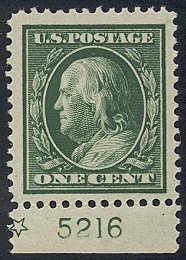 Scott
331, 1¢,
plate number 5216
Scott
331, 1¢,
plate number 5216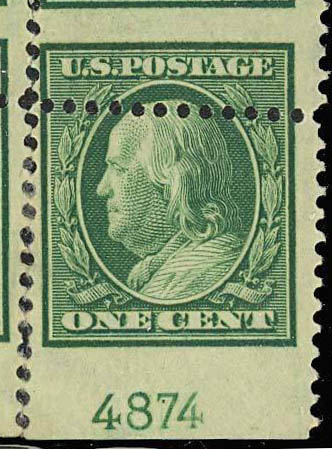 Scott
331 var, 1¢, misperfed vertically and horizontally, plate numbers 4874
Scott
331 var, 1¢, misperfed vertically and horizontally, plate numbers 4874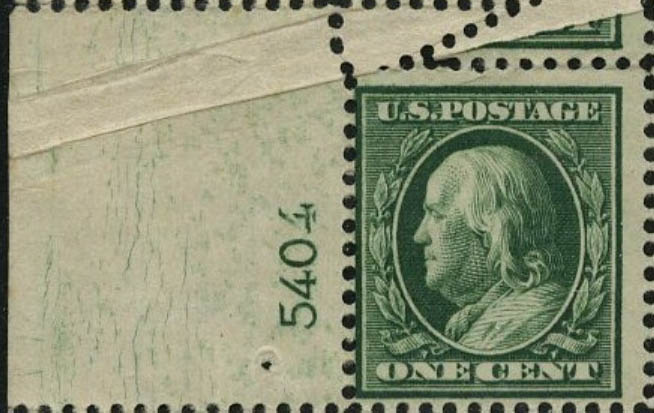
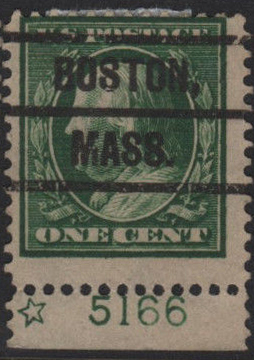 Scott
331 var, 1¢, Bureau precancel, plate number 5166
Scott
331 var, 1¢, Bureau precancel, plate number 5166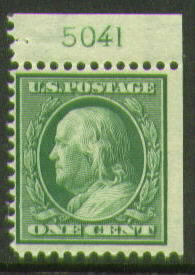 Scott
331a, 1¢ single from
booklet pane, plate number
5041
Scott
331a, 1¢ single from
booklet pane, plate number
5041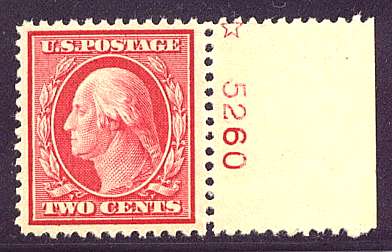 Scott
332, 2¢,
plate number 5260
Scott
332, 2¢,
plate number 5260 Scott
332 var, 2¢,
misperfed due to foldover, plate number 5292
Scott
332 var, 2¢,
misperfed due to foldover, plate number 5292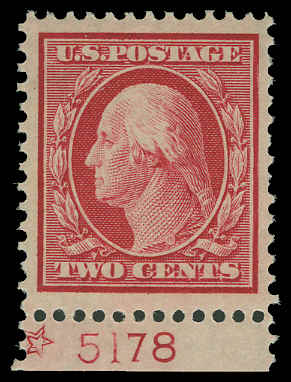
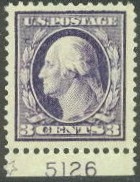 Scott
333, 3¢,
plate number 5126
Scott
333, 3¢,
plate number 5126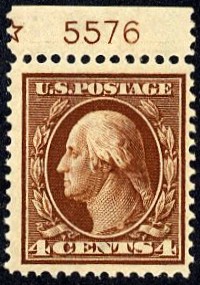 Scott
334, 4¢,
plate number 5576
Scott
334, 4¢,
plate number 5576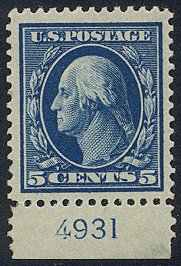 Scott
335, 5¢,
plate number 4931
Scott
335, 5¢,
plate number 4931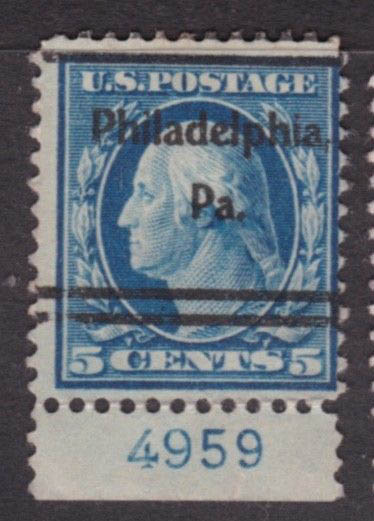 Scott
335 var, 5¢ Bureau precancel, plate number 4959
Scott
335 var, 5¢ Bureau precancel, plate number 4959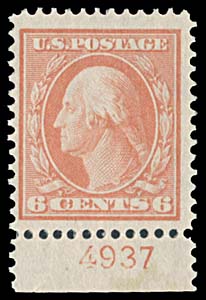 Scott
336, 6¢,
plate number 4937
Scott
336, 6¢,
plate number 4937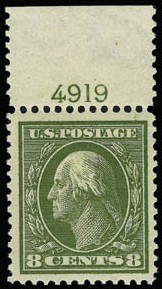 Scott
337, 8¢,
plate number 4919
Scott
337, 8¢,
plate number 4919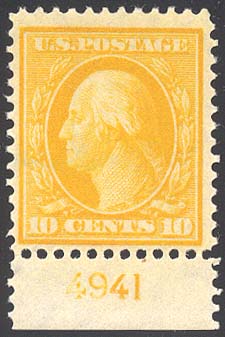 Scott
338, 10¢,
plate number 4941
Scott
338, 10¢,
plate number 4941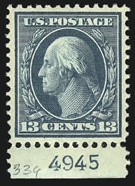 Scott
339, 13¢,
plate number 4945
Scott
339, 13¢,
plate number 4945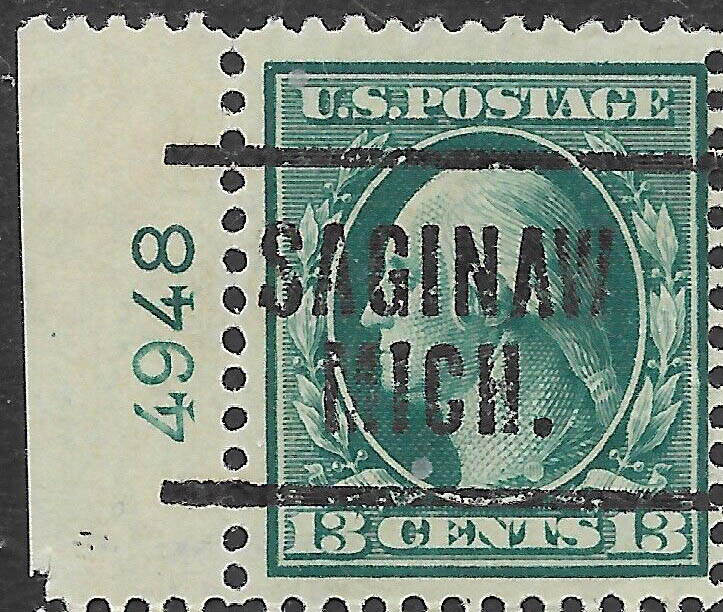 Scott
339 var, 13¢, Bureau precancel, plate number 4948
Scott
339 var, 13¢, Bureau precancel, plate number 4948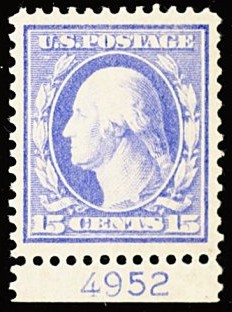 Scott
340, 15¢,
plate number 4952
Scott
340, 15¢,
plate number 4952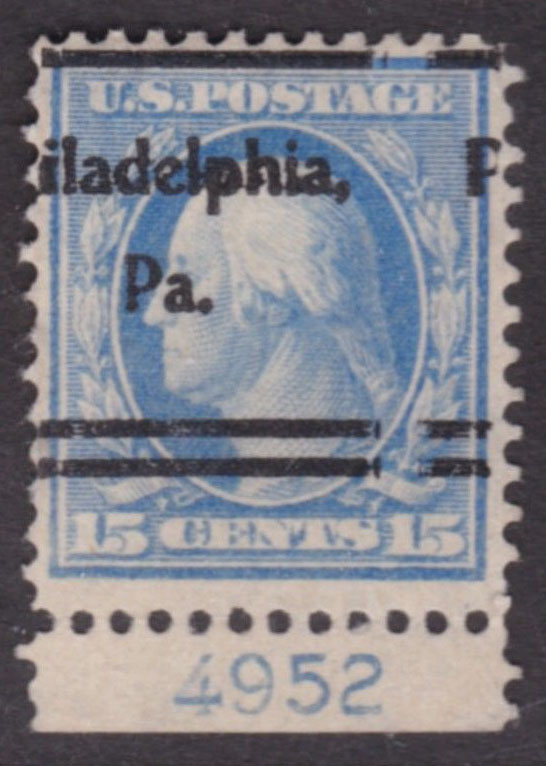 Scott
340 var, 15¢ Bureau precancel, plate number 4952
Scott
340 var, 15¢ Bureau precancel, plate number 4952 Scott
340 var, 15¢
"chalky paper"
variety, plate number 4949
Scott
340 var, 15¢
"chalky paper"
variety, plate number 4949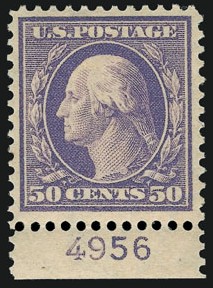 Scott
341, 50¢,
plate number 4956
Scott
341, 50¢,
plate number 4956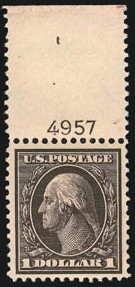 Scott
342, $1,
plate number 4957
Scott
342, $1,
plate number 4957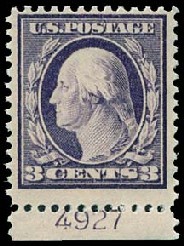 Scott
333a, 3¢ on China clay paper, plate number 4927
Scott
333a, 3¢ on China clay paper, plate number 4927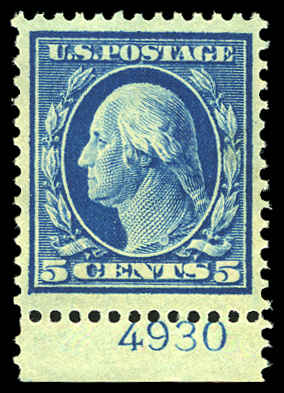 Scott
335 var, 5¢ on China clay paper, plate number 4930
Scott
335 var, 5¢ on China clay paper, plate number 4930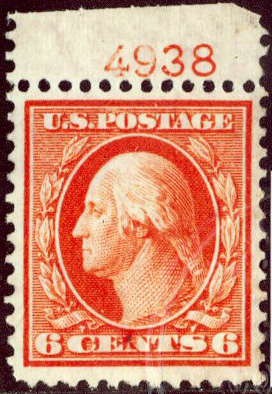 Scott
336 var, 6¢ on China clay paper, plate number 4938
Scott
336 var, 6¢ on China clay paper, plate number 4938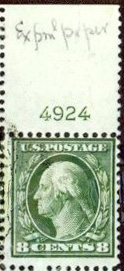 Scott
337 var, 8¢ on China clay paper, plate number 4924
Scott
337 var, 8¢ on China clay paper, plate number 4924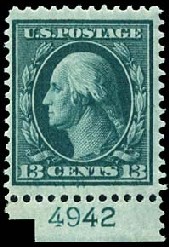 Scott
339a, 13¢ on China clay paper, plate number 4942
Scott
339a, 13¢ on China clay paper, plate number 4942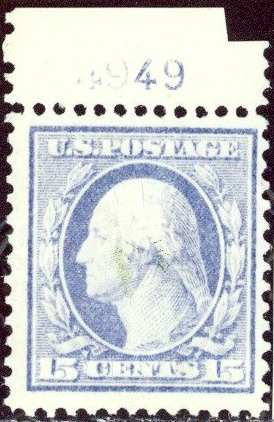 Scott
340 var, 15¢ on China clay paper, plate number 4949
Scott
340 var, 15¢ on China clay paper, plate number 4949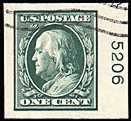 Scott
343, 1¢,
plate number 5206
Scott
343, 1¢,
plate number 5206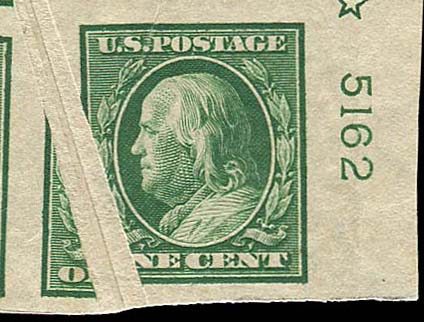 Scott
343 var, 1¢, pre-printing paper fold, plate number 5162
Scott
343 var, 1¢, pre-printing paper fold, plate number 5162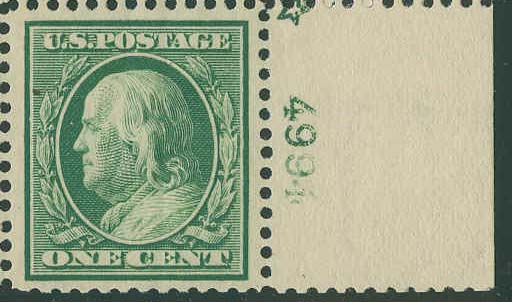
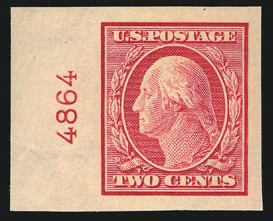 Scott
344, 2¢,
plate number 4864
Scott
344, 2¢,
plate number 4864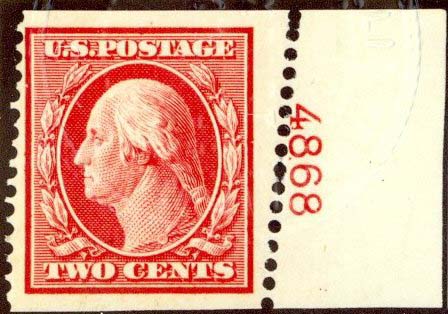
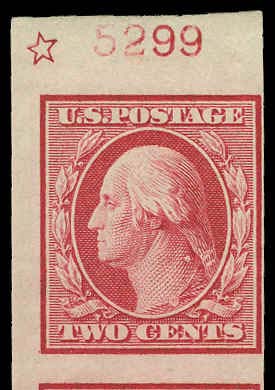 Scott
344V, 2¢, imperforate coil, plate number
5299
Scott
344V, 2¢, imperforate coil, plate number
5299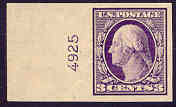 Scott
345, 3¢,
plate number 4925
Scott
345, 3¢,
plate number 4925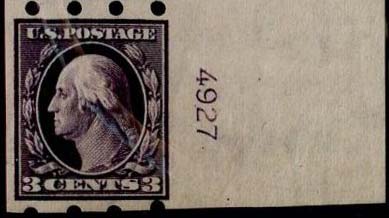 Scott
345 var, 3¢ with Brinkerhof Type I private vending machine coil perforations, plate number 4927
Scott
345 var, 3¢ with Brinkerhof Type I private vending machine coil perforations, plate number 4927 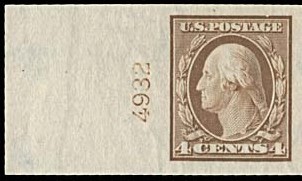 Scott
346, 4¢,
plate number 4932
Scott
346, 4¢,
plate number 4932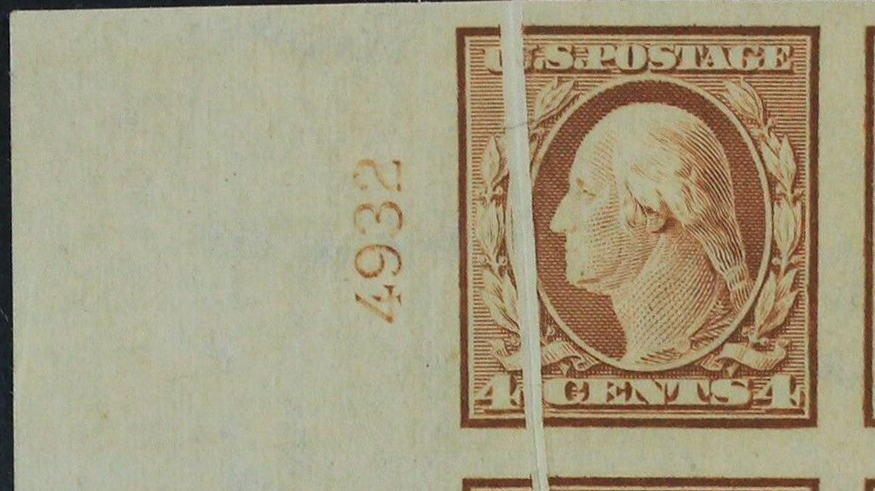
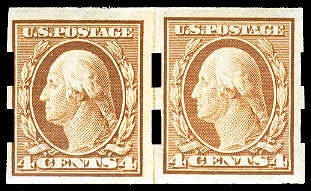
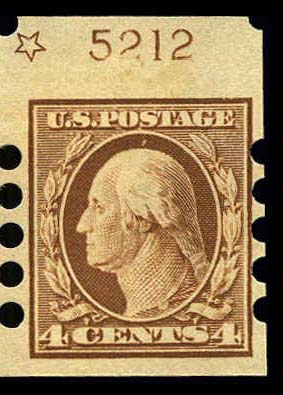
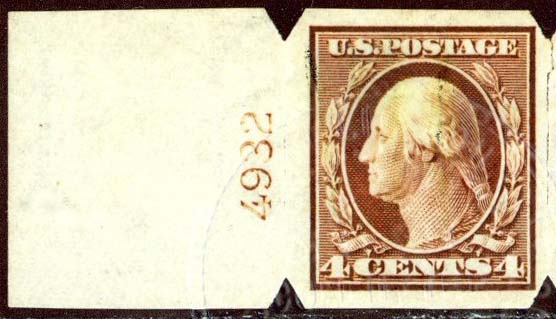
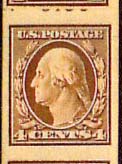 Scott
346V, 4¢, paste-up coil, plate number 5199
Scott
346V, 4¢, paste-up coil, plate number 5199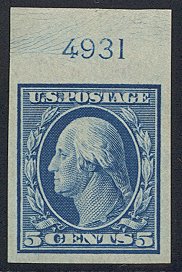 Scott
347, 5¢,
plate number 4931
Scott
347, 5¢,
plate number 4931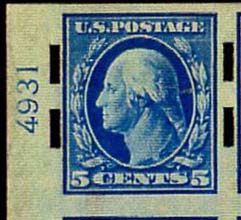
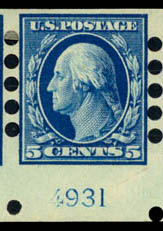
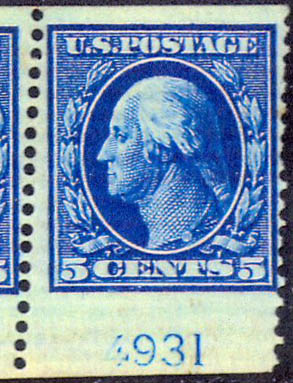
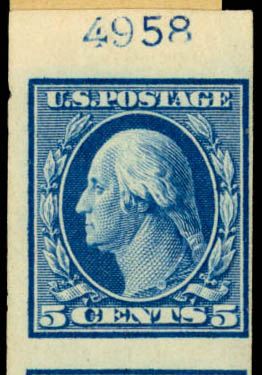 Scott
347V, 5¢ imperforate coil, leader strip affixed, plate number 4958
Scott
347V, 5¢ imperforate coil, leader strip affixed, plate number 4958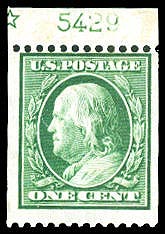 Scott
348, 1¢,
plate number 5429
Scott
348, 1¢,
plate number 5429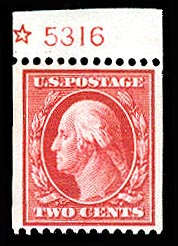 Scott
349, 2¢,
plate number 5316
Scott
349, 2¢,
plate number 5316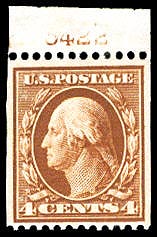 Scott
350, 4¢,
plate number 5422
Scott
350, 4¢,
plate number 5422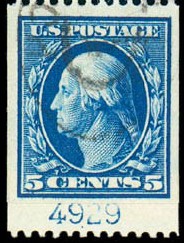 Scott
351, 5¢,
plate number 4929
Scott
351, 5¢,
plate number 4929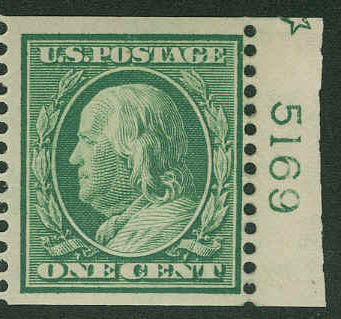 Scott
352, 1¢,
plate
number 5169
Scott
352, 1¢,
plate
number 5169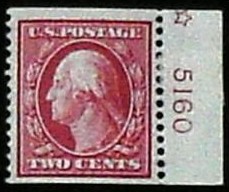 Scott
353, 2¢,
plate number 5160
Scott
353, 2¢,
plate number 5160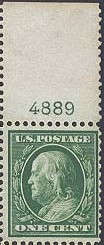 Scott
357, 1¢,
plate number 4889
Scott
357, 1¢,
plate number 4889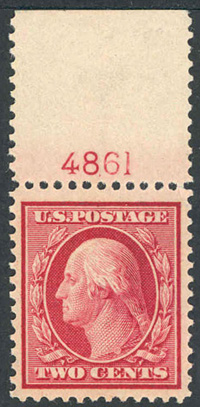 Scott
358, 2¢,
plate number 4861
Scott
358, 2¢,
plate number 4861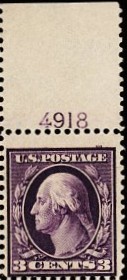 Scott
359, 3¢, plate number 4918
Scott
359, 3¢, plate number 4918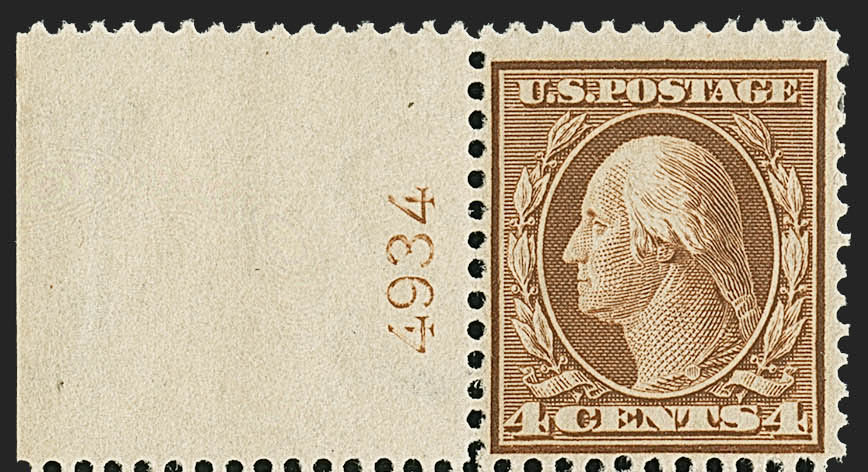 Scott
360, 4¢, plate number 4934
Scott
360, 4¢, plate number 4934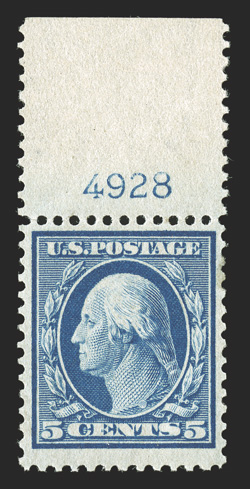 Scott
361, 5¢, plate number 4928
Scott
361, 5¢, plate number 4928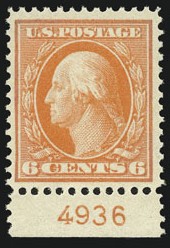 Scott
362, 6¢, plate number 4936
Scott
362, 6¢, plate number 4936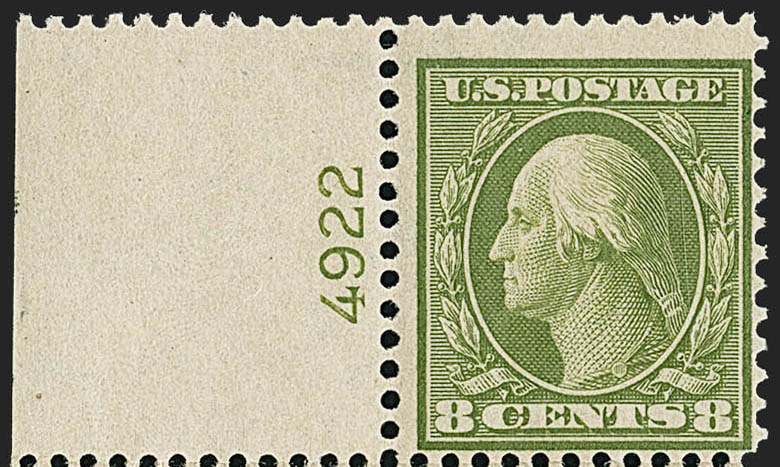 Scott
363, 8¢, plate number 4922
Scott
363, 8¢, plate number 4922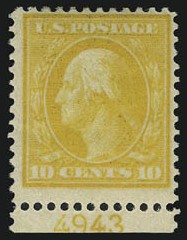 Scott
364, 10¢,
plate number 4943
Scott
364, 10¢,
plate number 4943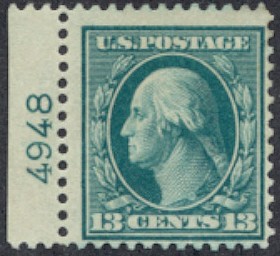 Scott
365, 13¢,
plate number 4948
Scott
365, 13¢,
plate number 4948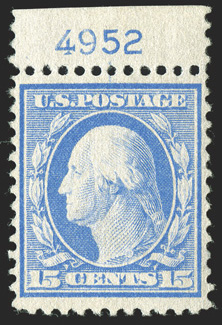 Scott
366, 15¢,
plate number 4952
Scott
366, 15¢,
plate number 4952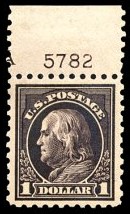 Scott 460, $1, double-line watermark, perforated 10, plate number 5782
Scott 460, $1, double-line watermark, perforated 10, plate number 5782
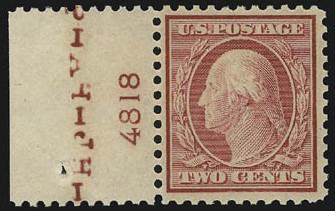 Scott
519, 2¢, plate number 4818
Scott
519, 2¢, plate number 4818

